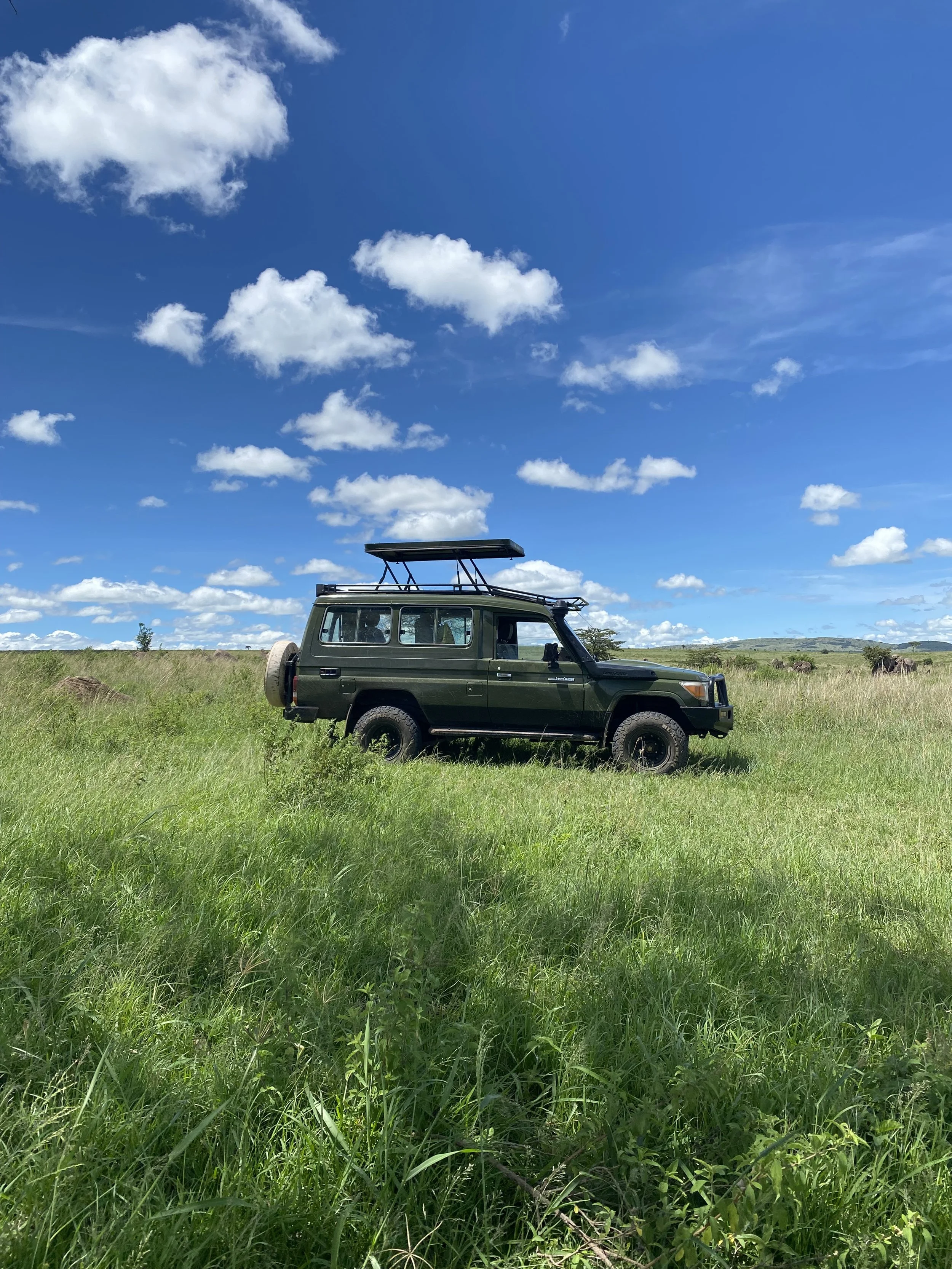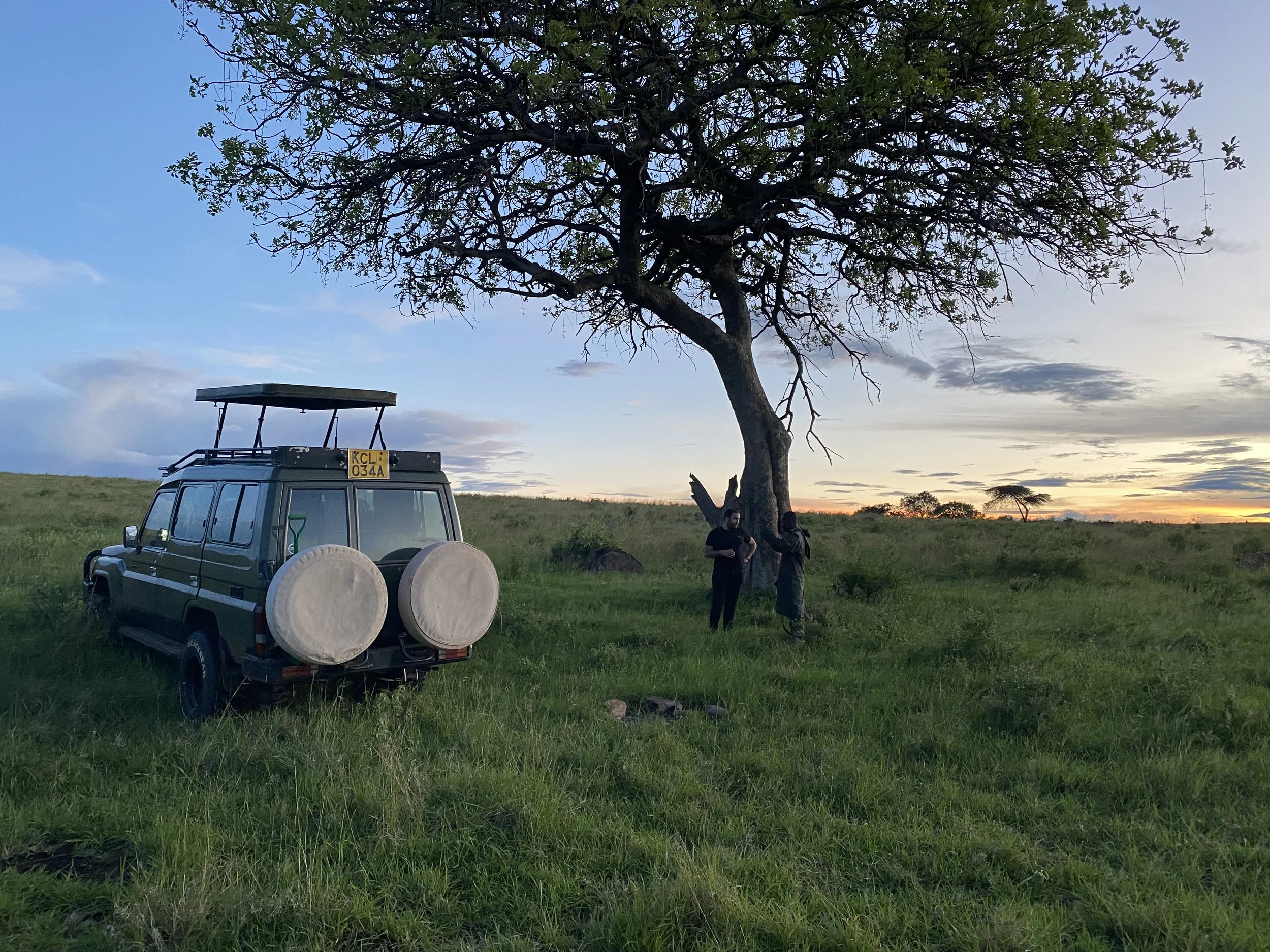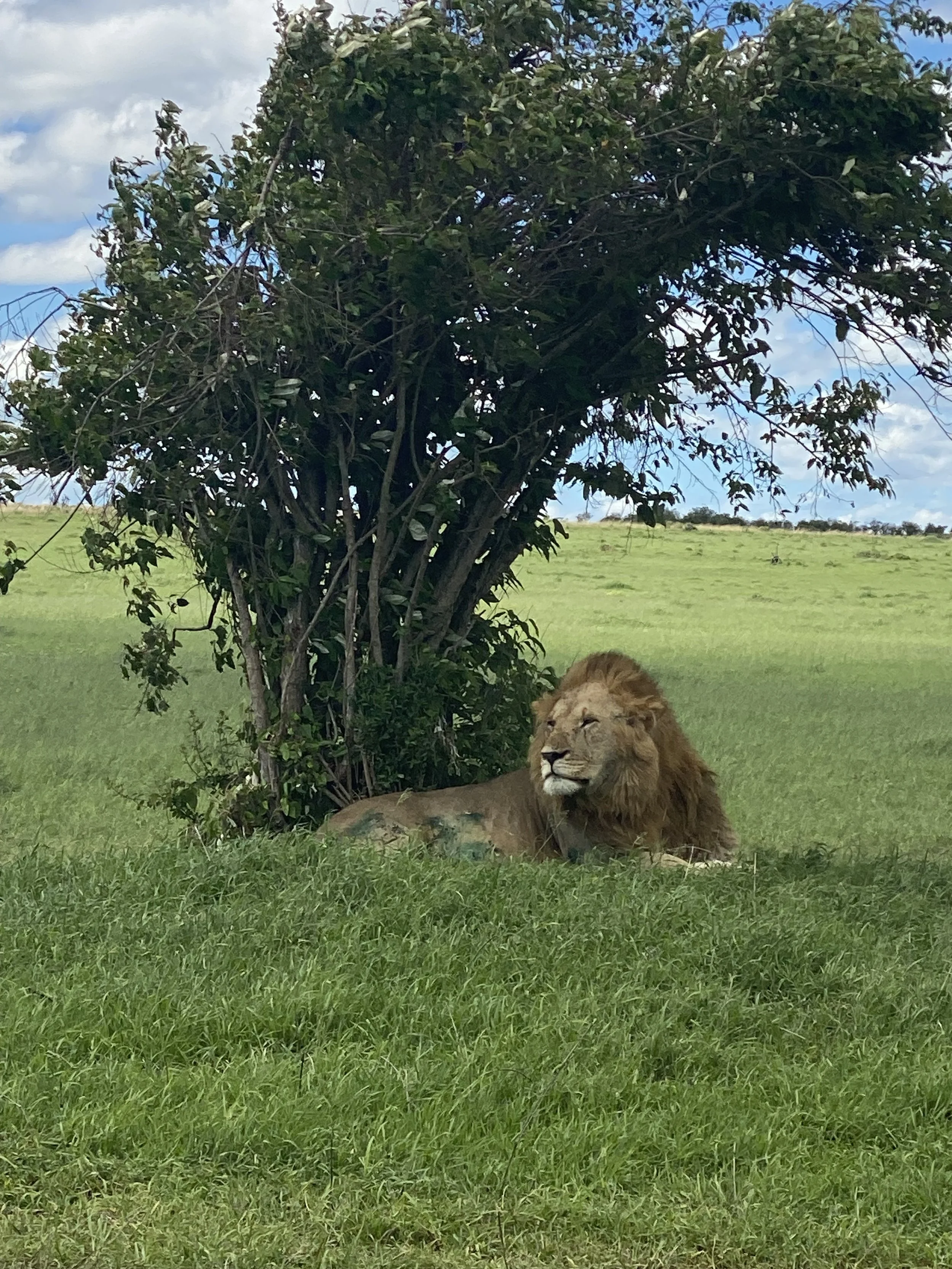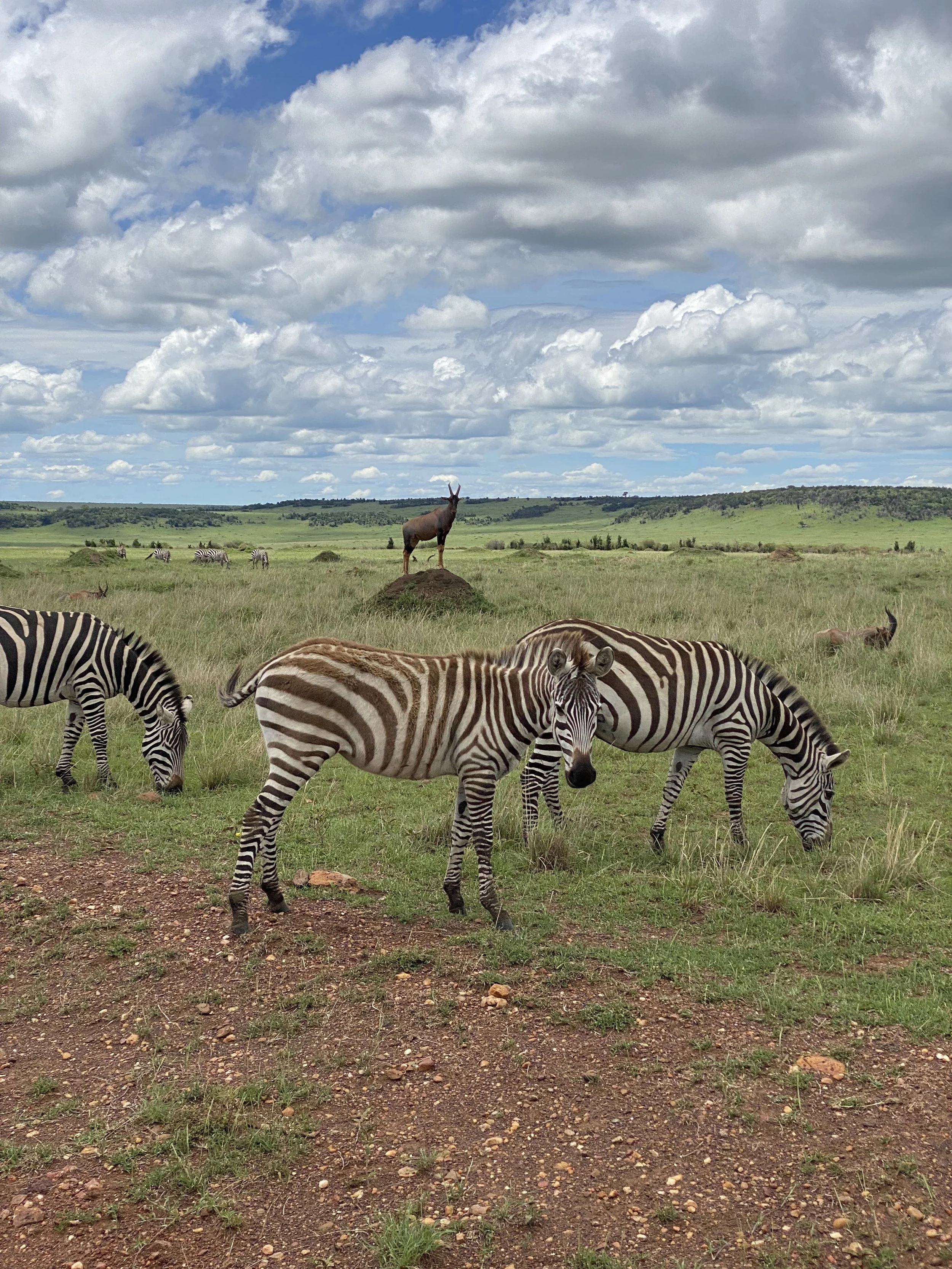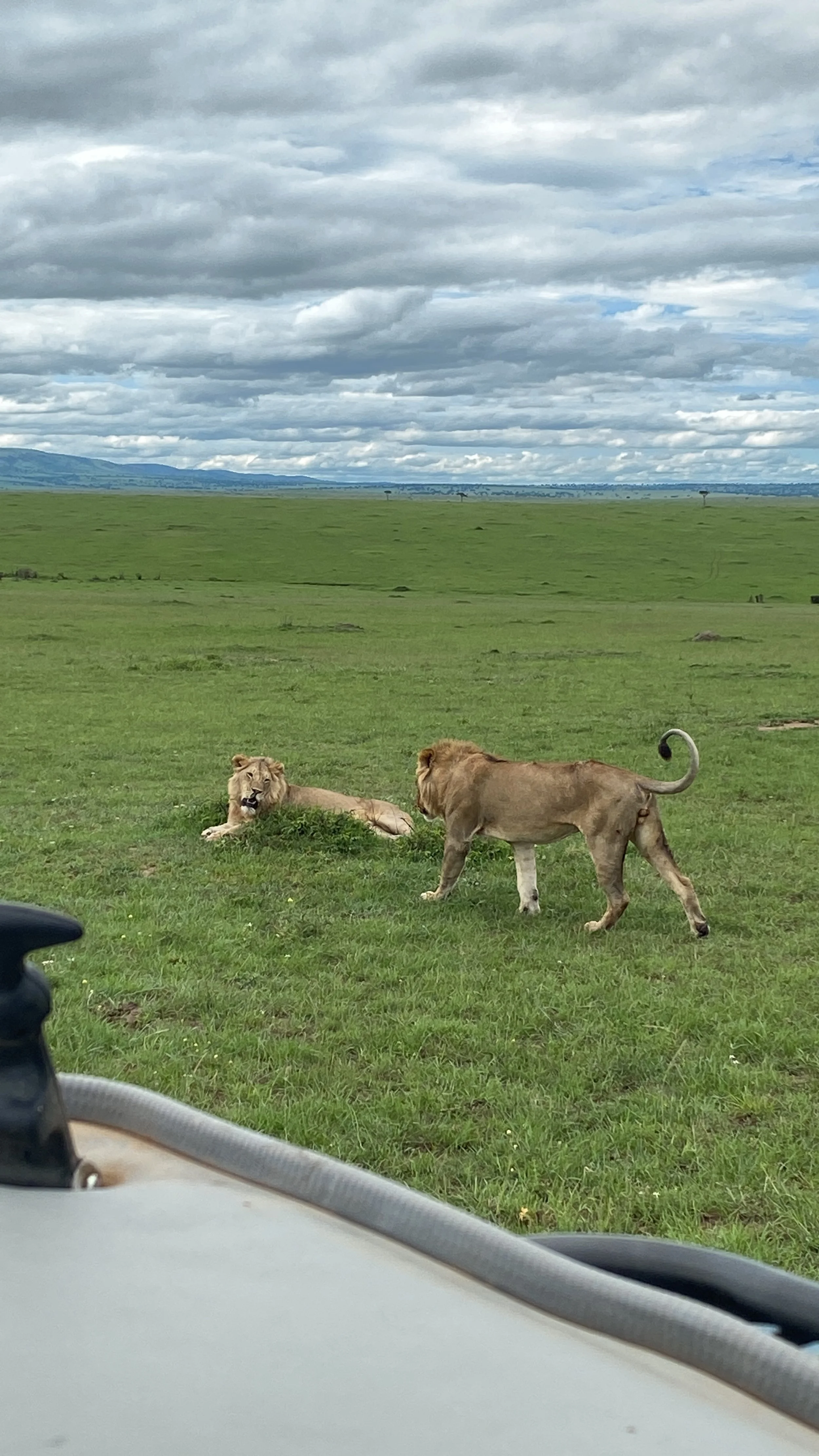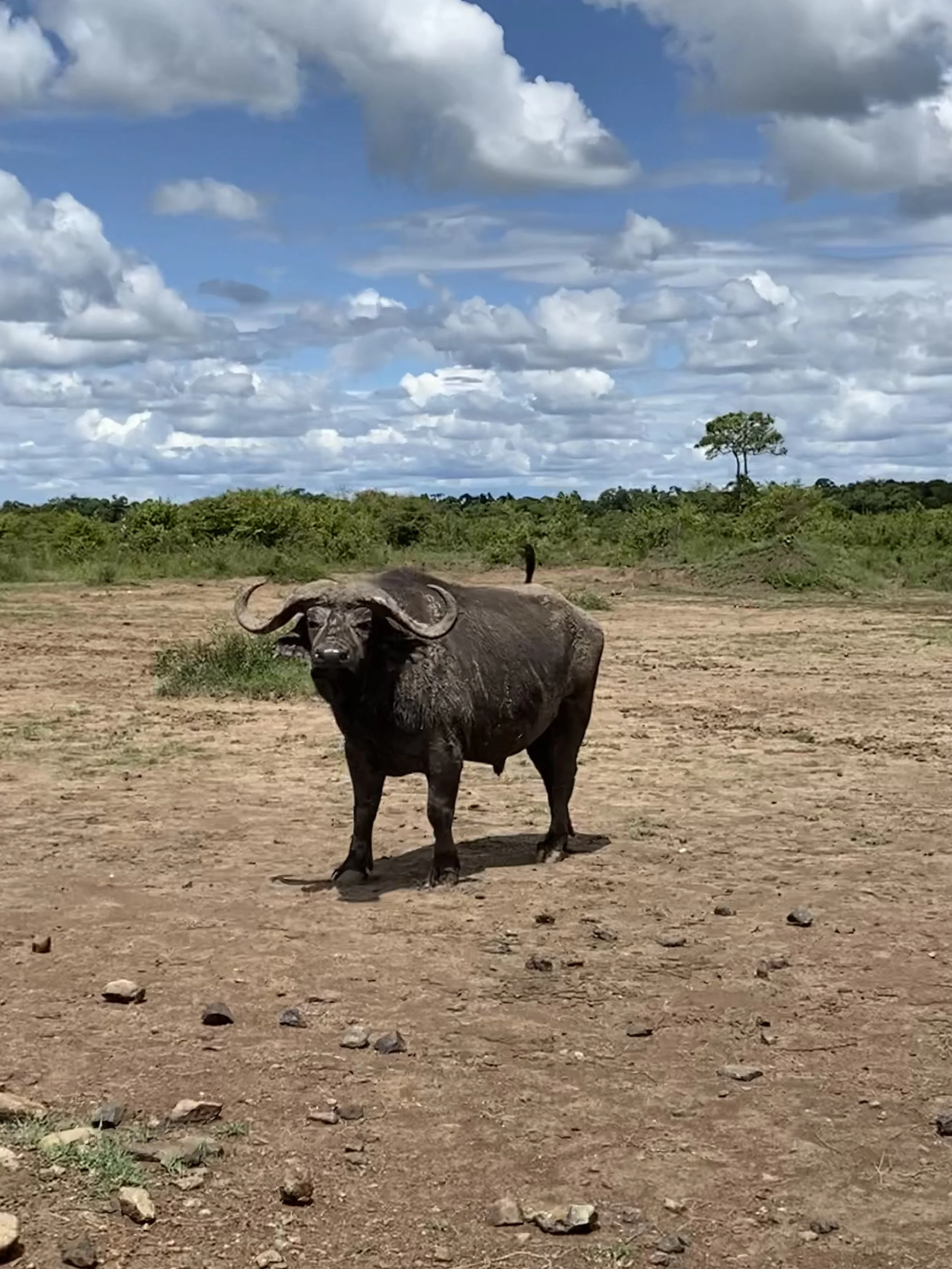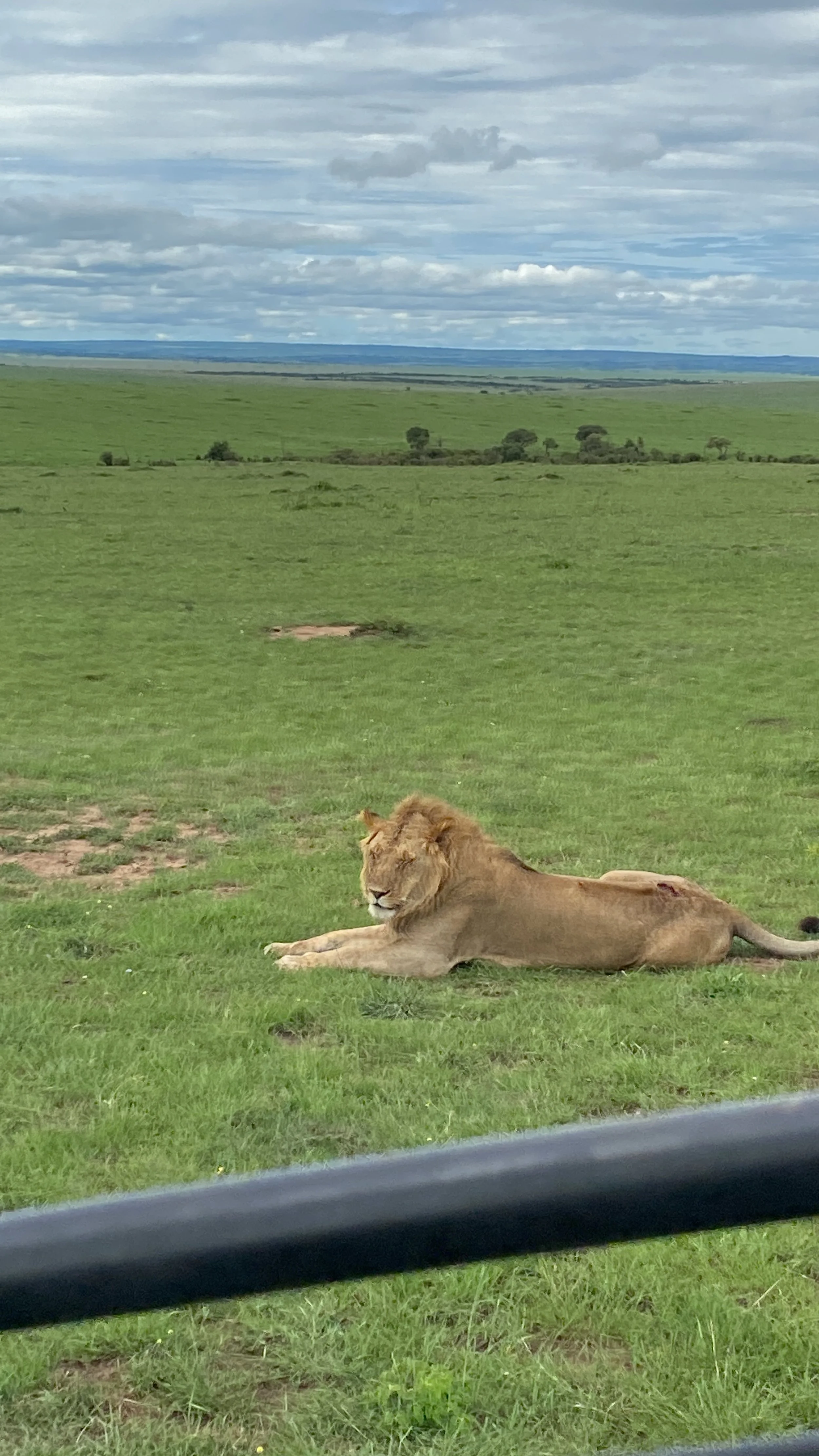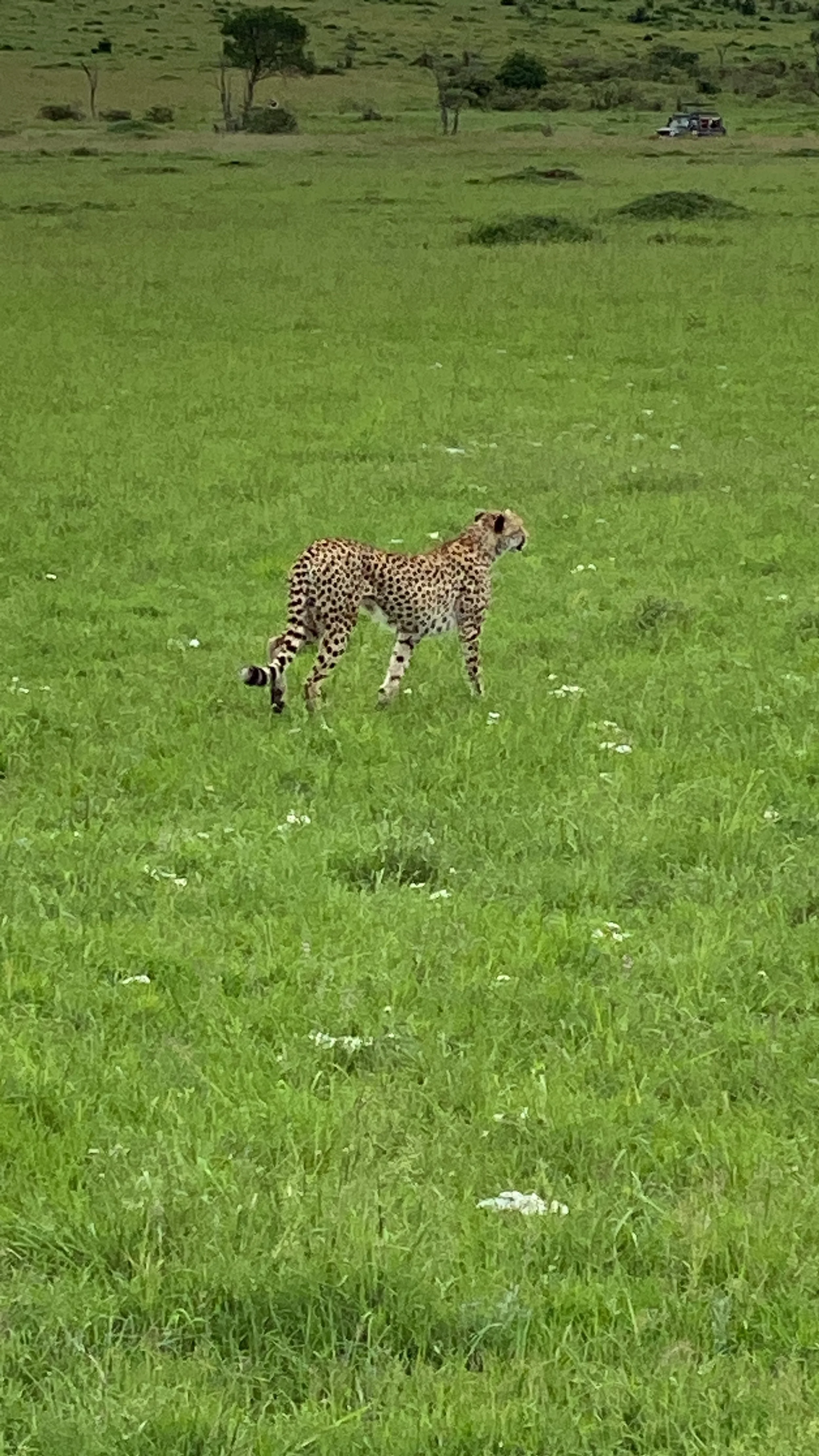Self-driving Safari in the Maasai Mara, Kenya
November 2023
There's nothing like the thrilling feeling you get when you start a daring adventure through the beautiful Maasai Mara at sunrise, all on your own. In those precious moments, you come face to face with a majestic lioness, her majestic presence inspiring amazement and respect. The incredible mix of adrenaline and disbelief overwhelms you, creating a moment that you'll never forget.
During our thrilling safari adventure, we discovered that self-driving was an uncommon and oftentimes challenging experience. However, despite the initial setbacks, it surprisingly added an extra layer of excitement and sense of accomplishment to our journey. And with the expectation of being asked about our unconventional choice, we are eager to share the meticulous planning and careful organisation that went into creating such a memorable and unique safari experience.
Pros and Cons of a Self-drive Safari vs an Organized Safari
Cost breakdown of a self-drive safari:
Our 4-day safari, planned by ourselves:
Is November good time? Serengeti or Maasai Mara?
Pros and Cons of a self-drive safari vs an organized safari:
Pros:
When it comes to self-drive safaris, there are several advantages that make this type of adventure truly worthwhile. Firstly, it offers a more budget-friendly option compared to guided tours. A cheap guided safari costs around 250 USD per person per day, in a large group of people. The cost can rise to way more than that if the number of participants is less. Our 4-day self-organized safari costed us much less indeed.
In addition to the cost savings, self-drive safaris provide a sense of freedom that is unparalleled. You have the flexibility to create your own itinerary and explore the wilderness at your own pace. There's no need to adhere to a strict schedule or follow a predetermined route.
To enhance our self-drive safari experience even further, we decided to hire a ranger. This decision not only provided us with valuable insights and knowledge about the wildlife and natural surroundings but also added an extra layer of safety and assurance. The ranger's expertise and professionalism gave us peace of mind as we set off on our independent journey.
In conclusion, embarking on a self-drive safari offers a range of advantages, from the financial benefits and freedom to the opportunity for genuine cultural immersion. By weighing our costs against guided tours, embracing our autonomy, and engaging with knowledgeable locals, our self-drive safari experience became an unforgettable adventure of a lifetime.
Cons:
An organized tour would be much safer, providing a sense of security and peace of mind, particularly when navigating through unfamiliar territory in a foreign country. The knowledgeable guides are trusted companions, helping travelers every step of the way. Tour operators plan the itinerary, taking care of logistics and accommodations. Traveling in a group fosters camaraderie and creates lasting memories. Organized tours offer safety and enhance the travel experience, so you can focus on enjoying the journey without worry.
Our choice:
After all, as The Uncomfortable Travelers who crave adventures beyond the ordinary, we are allergic to excessive comfort and prefer to embrace challenges independently. It is precisely this thirst for the unconventional that guided us to embark on a self-drive safari!
Cost breakdown of a self-drive safari:
Maasai Mara daily park fees (for 3x24hours): 70 USD x 2 x 3
Landcruiser rental with Roadtrip Africa: 140 USD x 4
Fuel for the landcruiser: ~200 USD
Provisions: 60 USD
Lodge night: 80 USD per night (We spent only one night in the tent, and 2 nights at the lodge)
Tips for rangers: 90 USD
Tent Gear for 2 people: 150 USD
The total cost was for both of us: ~1560 USD for a 4-day self-drive safari (with 2.5 days of full game drive inside the Maasai Mara). The cheapest similar option (2-people, 4-day) for a guided tour we could find was around 2000 USD.
Our 4-day safari, planned by ourselves:
Here's a quick recap of our amazing 4-day safari adventure in Masai Mara:
On Day 1, we woke up early and rented a car from RoadTrip Africa’s office in Nairobi. It was the only company we found that allowed us to drive ourselves. We had to book our Land Cruiser in advance and pay online. We then drove to the Maasai Mara using the Narok road. The drive was chaotic and dangerous, with reckless drivers and bad roads. We stopped in Narok to get fuel and supplies. It was the last major village before the Maasai Mara, so we made sure to buy everything we needed, like water, tuna, cheese, toast, toilet paper, snacks, milk, and juice. In the Maasai Mara, there was no food available unless you went to a fancy lodge.
We drove to the Maasai Mara and reached the Seknani gate. We paid the park fees for the number of days we wanted to stay, which was three. Some locals came up to us, pretending to be guides. A ranger warned me about them. If you need a guide, just hire a ranger for a day. They have the most knowledge about the reserve.
We’ve been told that Sand River is the best public campsite, we we drove there. We arrived barely at dusk. Driving is not allowed after sunset in the Maasai Mara. So we did not have time .
We set up our tent fast with friendly park rangers. The campground was mostly empty, which surprised us. The rangers offered to stay and watch over us for a tip, but we declined once they assured us that it was safe to sleep in the tentWe didn't consider the danger, but we chose to proceed with our first camping adventure in the wild, even though we spotted a few elephants just a short distance from our tent. That was a big mistake. During the night, while camping in the open wild, we heard animals walking by our tent. It was a terrifying night, and if we ever did this again, we would hire a ranger if we were brave enough.
On Day 2, we woke up alive and grateful, even though we couldn't sleep well the first night. We realized it was a mistake to sleep in a tent without rangers for protection. We packed up our tent gear and started our self-drive Safari! We hired a ranger for our first game drive, who helped us spot animals. In just 4 hours, we saw lions, lioness and their babies, herds of zebras, elephants, giraffes, and warthogs. We also went to the Mara Triangle (oloololo gate) and saw crocodiles and hippos at the Mara River. We dropped off the ranger at Sand River campsite, then continued driving randomly, enjoying the beautiful savanna. We even drove to the borders of Tanzania. At the end of the day, we decided not to camp in the wild and instead found a cheaper option, Tayari Tented Camp, just a few minutes away from Sekenani gate outside Maasai Mara.
On Day 3, We woke up early to see the sunrise at Maasai Mara. We explored all day, driving and taking breaks. We did it on our own, without local guides, and enjoyed seeing animals in the wild. It was November, not the busy season, so the drive wasn't crowded. We found ourselves in the heart of the savannah, surrounded by animals and nature. What an amazing feeling! By the end of the day, we headed back to Tayari Lodge.
The last day came while we still didn’t see some important animals. So we hired a ranger for the first part of the day. With his help, we spotted a leopard! We even saw a cheetah hunting for her babies. It felt like we were living in a National Geographic documentary! We couldn't see the Rhino even though the ranger tried to find it where it usually lives. At noon, we dropped off the ranger at the Sekenani gate and started driving back to Nairobi. We returned the car at Roadtrip and continued our journey.
Is November good time?
When we had the idea for a safari, we couldn't wait to make it a reality. So, without further delay, we set off on our adventure, seizing the opportunity to embark on this thrilling expedition in the month of November. Perhaps some might say we rushed our plans, but we wholeheartedly believe it was the right decision. While November may not be considered the peak season for safaris and is known for its occasional rain showers, we found that there were fewer tourists around. This allowed us to fully embrace our surroundings and revel in the sights and sounds of nature without the hustle and bustle of crowds. Additionally, the prices during this time were lower, which was an unexpected bonus. As we gazed up at the cloudy sky, we were mesmerized by the patterns that seemed to form at random, painting an ever-changing canvas above us. It was truly a sight to behold. However, one thing that we missed out on during our November visit was the renowned wildebeest migration, a natural wonder that we are eagerly looking forward to experiencing in a future safari opportunity.
Serengeti or Maasai Mara?
We have been fortunate enough to experience the breathtaking beauty of Maasai Mara, and it truly exceeded all of our wildest expectations. Initially, we deliberated over whether or not to venture into the renowned Serengeti in Tanzania, but after hearing that animal sightings may be scarcer compared to Maasai Mara, we decided to spend our time immersing ourselves in other activities within Kilimanjaro region. While it is undeniable that Serengeti holds the title for being larger in size than Maasai Mara, we were content with our decision as we embarked on our incredible three-day journey through Maasai Mara, covering over a staggering 300 kilometers within the reserve. Surprisingly, we were fortunate enough to witness a vast array of iconic wildlife, with the exception of the elusive Rhino.
